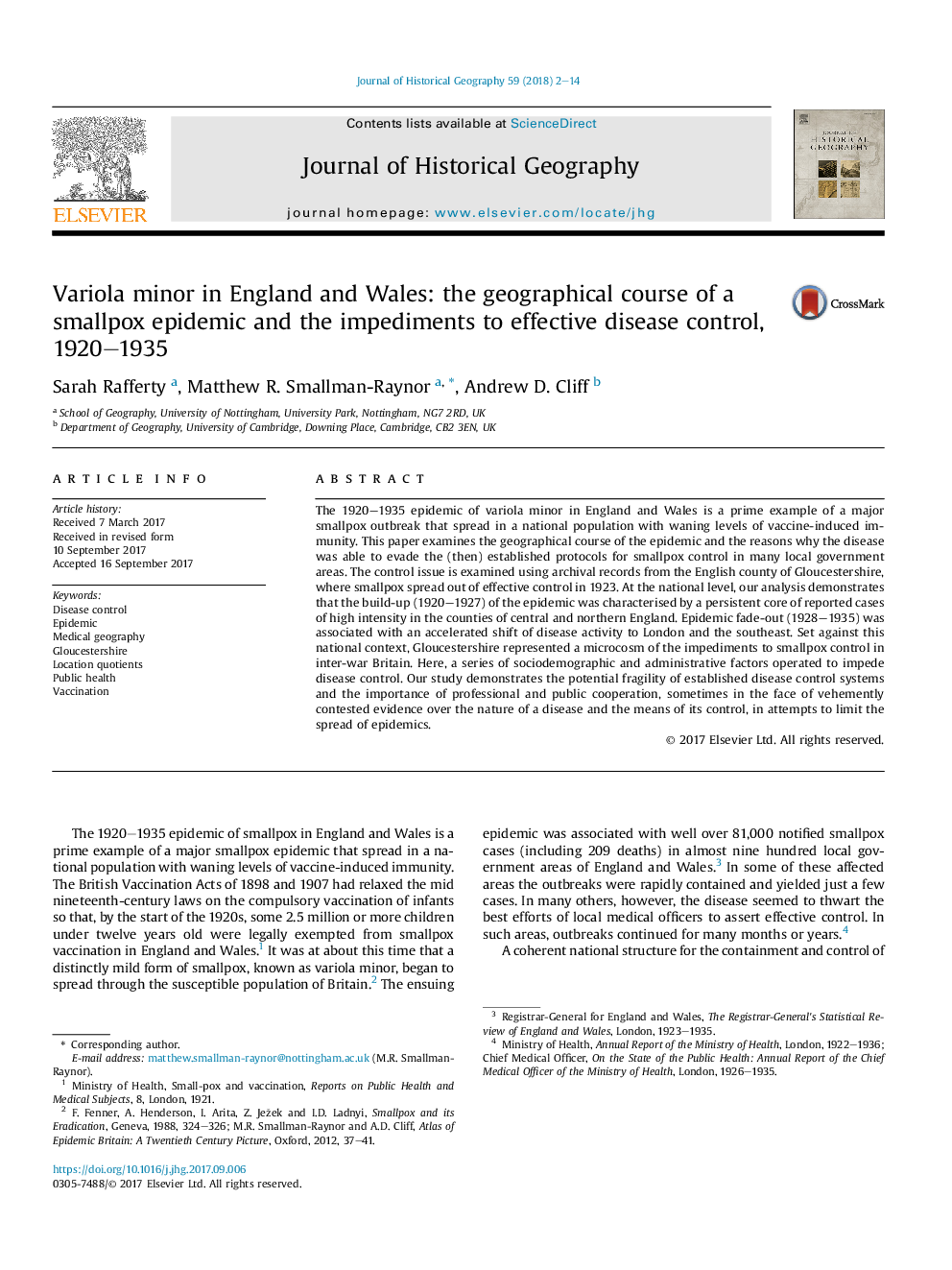| Article ID | Journal | Published Year | Pages | File Type |
|---|---|---|---|---|
| 7446976 | Journal of Historical Geography | 2018 | 13 Pages |
Abstract
The 1920-1935 epidemic of variola minor in England and Wales is a prime example of a major smallpox outbreak that spread in a national population with waning levels of vaccine-induced immunity. This paper examines the geographical course of the epidemic and the reasons why the disease was able to evade the (then) established protocols for smallpox control in many local government areas. The control issue is examined using archival records from the English county of Gloucestershire, where smallpox spread out of effective control in 1923. At the national level, our analysis demonstrates that the build-up (1920-1927) of the epidemic was characterised by a persistent core of reported cases of high intensity in the counties of central and northern England. Epidemic fade-out (1928-1935) was associated with an accelerated shift of disease activity to London and the southeast. Set against this national context, Gloucestershire represented a microcosm of the impediments to smallpox control in inter-war Britain. Here, a series of sociodemographic and administrative factors operated to impede disease control. Our study demonstrates the potential fragility of established disease control systems and the importance of professional and public cooperation, sometimes in the face of vehemently contested evidence over the nature of a disease and the means of its control, in attempts to limit the spread of epidemics.
Related Topics
Social Sciences and Humanities
Arts and Humanities
History
Authors
Sarah Rafferty, Matthew R. Smallman-Raynor, Andrew D. Cliff,
